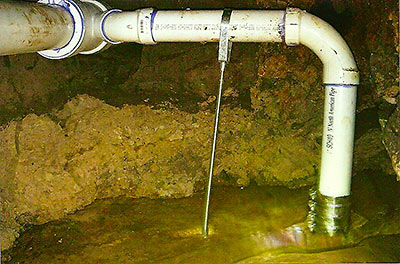Whatever your ethnicity, it’s probably not too far off from that of Julie, the Sitepal avatar some fun folks at Rebuild Houston have been using to narrate a series of videos demonstrating how to look up and recalculate the new drainage fee on your property using the city’s Drainage Utility Charge Viewer. Julie’s kinda like you — only maybe she moves and talks a little more stiltingly, and she probably wears more makeup. She’s probably also a little less concerned about the resulting monthly costs, or the imperviousness of the whole thing. Still, Julie’s a trooper: She appears to be standing in the middle of Buffalo Bayou, getting her own feet wet as she processes the script into remarkably natural-sounding speech, blinks occasionally, and convincingly wiggles her lips to the words.
Utilities
COMMENT OF THE DAY: SOLAR ENERGY MARKETING SECRETS — REVEALED “As soon as these things can be leased at a price that’s less than the cost of electricity they produce, it’ll be a home run. No one seems to offer long term leases that would last the lifetime of the hardware. I’m not sure how many years of amortization it would take so that the payment was smaller than the savings, or even if they last long enough to ever pay themselves off, but if such a model could be devised it would be great. Then you’d have tons of buyers, which would drive costs down, getting more buyers, etc.” [Cody, commenting on Pods Appear on Downtown Building, Grab Solar Panels with Wrench and Garden Hose]
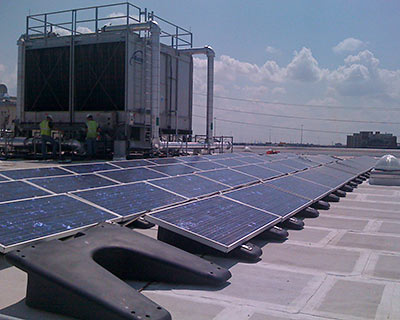
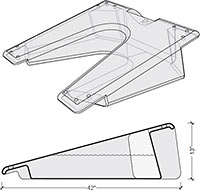 Hanging out on the roof of Houston’s new Central Permitting and Green Resource Center at 1002 Washington Ave.: Solar panels, anchored by the first-ever commercial installation of Metalab Studio’s new PV-Pod. The local architecture firm developed the hollow high-density polyethylene pods with support from a UH Green Building Components grant. There’s one pod for each panel, and each is filled up with just enough water to resist required wind forces. This kind of assembly is much simpler to install than a typical photovoltaic-panel rack system with concrete ballast blocks, claims Metalab’s Andrew Vrana. It also allows for a more flexible layout. The new permit building opened for business yesterday.
Hanging out on the roof of Houston’s new Central Permitting and Green Resource Center at 1002 Washington Ave.: Solar panels, anchored by the first-ever commercial installation of Metalab Studio’s new PV-Pod. The local architecture firm developed the hollow high-density polyethylene pods with support from a UH Green Building Components grant. There’s one pod for each panel, and each is filled up with just enough water to resist required wind forces. This kind of assembly is much simpler to install than a typical photovoltaic-panel rack system with concrete ballast blocks, claims Metalab’s Andrew Vrana. It also allows for a more flexible layout. The new permit building opened for business yesterday.
MAYOR PARKER: FEE-FREE IMPERVIOUS SLABS FOR EVERYBODY! Responding to criticisms that the city’s new Rebuild Houston drainage fees came out higher than figures bandied about before voters approved Proposition 1 last year, Mayor Parker announced today that every property owner in the city will receive a permanent drainage-free credit for the first 1,000 sq. ft. of impervious surface on a lot. The median bill, she says, should now be “between 5 and 6 dollars” per month, beginning in July. The credit will result in a reduction of funds available for drainage projects — down to $110 million from $125 million, Parker projects. To make up the $15 million shortfall in the first year, the mayor says she has negotiated prepayments to the city’s enterprise funds. [Mayor’s Office; previously on Swamplot]
PARKER: HOUSTON LOTS MUCH BIGGER THAN WE THOUGHT Acknowledging that the city underestimated the cost of the average homeowner’s drainage fee by $3.25 per month, Mayor Parker blames faulty estimates of the size of the typical Houston residential lot. The city had presumed that the average Houston home had a 1,875-sq.-ft. impervious footprint and sat on 5,000 sq. ft. of land. But appraisal district data and satellite images now show that the typical Houston home sits on a 7,500-sq.-ft. lot and has 2,850 sq. ft. of impervious surface. [Houston Chronicle]
COMMENT OF THE DAY: WORKS EVEN BETTER WHEN YOUR NEIGHBORS STUFF THEIR TOWNHOUSES WITH FOAM PEANUTS “I live in a 3 story townhome (2800 sq ft., shared walls, middle unit, north-facing) and the pleasant surprise for me has been the utility bills. July/August/September (bills since 2008) – no more than $140/month (@ ~.10/kw). Electrical bill drops down to <$100 in the winter. Since I have shared walls, the units on either side of me act as additional insulation for me.” [Terry, commenting on Houston Home Listing Photo of the Day: Dramatic Entry]
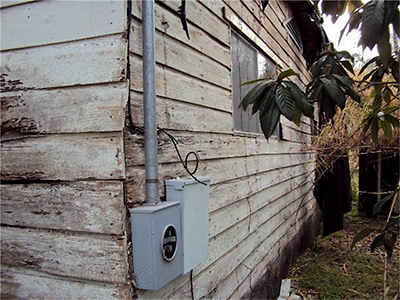
- 6125 Rollins St. [HAR]
COMMENT OF THE DAY: NAMING RIGHTS “. . . How ironic that the Astrodome is now called ‘Reliant Astrodome’ and suffers from an ‘electrical fire.’ Lame.” [David Beebe, commenting on The Short History of the Astrodome]
THE SHORT HISTORY OF THE ASTRODOME  The Astrodome’s electricity was cut off today after a small transformer fire broke out in a vault on the stadium’s east side. After extinguishing the blaze, firefighters used fans to escort a domeful of smoke out the exit ramp. [MyFox Houston; previously on Swamplot] Photo: MyFox Houston
The Astrodome’s electricity was cut off today after a small transformer fire broke out in a vault on the stadium’s east side. After extinguishing the blaze, firefighters used fans to escort a domeful of smoke out the exit ramp. [MyFox Houston; previously on Swamplot] Photo: MyFox Houston
COMMENT OF THE DAY: CLEAR PROOF THAT THEY WERE ONTO SOMETHING BIG, BEFORE IT ALL CAME CRASHING DOWN “well it would appear there’s lots of wind up there for harvesting!” [movocelot, commenting on Pieces of Wind Turbine Fall Onto Street from Top of Hess Tower Downtown; Blades on “Lockdownâ€]

Sometime before the Christmas holiday last year, “high winds” caused a part of one of the wind turbines mounted to the top of downtown Houston’s Hess Tower to “detach” from its mounting point. “Two pieces of the debris fell to the street. Nobody was injured,” Hess Corporation spokesperson Mari Pat Sexton tells Swamplot today. Sexton had no comment on circulating rumors that one or more of the the pieces struck a car on the street.
The incident helps explain why the whirling turbines, installed as a featured element at the top of the new 29-story tower last summer, have been silent since mid-December. In the photo above, taken by a HAIF commenter shortly before Christmas, the turbines appear to be missing. “After the event occurred, (the turbines) were locked down,” Sexton says, adding she is unaware of the turbines’ current status or whether there are plans to replace them. “The building is still under construction.”
The Gold LEED certified skyscraper, named Discovery Tower until Hess signed on to lease the whole thing 2 years ago, sits at the northern edge of Discovery Green, a short walk from Minute Maid Park. It was developed by Trammell Crow, designed by Gensler, is the thirtieth-tallest building in Houston, and was the first in town to feature — and draw some power from — wind turbines. Here’s how they looked (and sounded) last year, before the incident:
HOUSTON EV INCENTIVES: FREE JOLT FOR YOUR VOLT, TOLL RELIEF FOR YOUR LEAF At the unveiling yesterday of plans for the 150-station electric-vehicle charging network NRG Energy will be building in Houston, Mayor Parker announced a few additional perks for local EV owners: Electric vehicles that can drive fast enough will be allowed on Metro-operated HOV lanes for free, and the city will negotiate reduced rates for them on area toll roads. Owners of the new Chevy Volt will be able to get home charging stations installed for free; they’ll also be available at a reduced cost for Nissan Leaf buyers. The city will also be adding to its own small network of charging stations around the city, with 45 new additional juice dispensers for public use. [Houston Chronicle; previously on Swamplot] Video: eVgo


A spokesperson tells Swamplot the map above gives a “pretty good” indication of where you’ll soon be able to find electric-vehicle charging stations in the new eVgo network announced today by NRG Energy. NRG says it will put “convenience” stations in parking lots in front of Best Buy, Spec’s, H-E-B, and 18 Walgreens stores, as well as faster-charging “freedom” stations in various locations along freeways, in shopping and business districts, and in other parking lots around Harris County. The company expects to have 50 Houston stations in place by the middle of next year — 150 by the time the network is complete — but no specific locations have been announced yet. NRG, which owns Reliant Energy, is calling Houston’s eVgo “the nation’s first privately funded, comprehensive electric vehicle (EV) ecosystem” but the second and third ecosystems shouldn’t be too far behind: The company plans to begin the rollout of similar setups “across Texas” next year. The first Houston stations should be ready to spout electrons in February.
Chargers will come in two flavors:
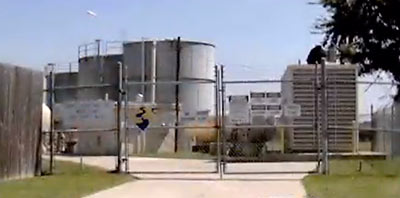
All it takes is a little subtraction! Say you’ve got 20 picocuries of cancer-friendly alpha radiation per liter in your drinking water. Well, there’s gotta be some margin of error in measuring it, right? Say, 6 picocuries per liter? Then just go ahead and subtract that number out (because you’ve gotta be optimistic about these things, you know, or it’ll kill you). Then . . . voilà ! Your level of those nasty little mutation-causing particles is now just 14 picocuries. And phew! what a relief! Because the EPA’s “maximum contaminant level” for alpha radiation happens to be 15 picocuries per liter, and those math wizards at the Texas Commission on Environmental Quality have just saved your community’s water supply from receiving a violation notice! Slight problem: since 2000, the EPA has requested that states not use this little data-jiggering technique. But not to worry: TCEQ’s Linda Goodins, who oversees all drinking-water safety regulation for the state, doesn’t think the EPA’s request was an actual requirement. (Just to placate to those ever-meddling feds though, TCEQ discontinued its subtraction technique last year.)


